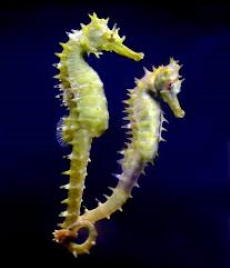
Email: ZYVC057@live.rhul.ac.uk
Total Article : 213
About Me:I'm a graduate student studying International Criminal Law and first started writing for King's News almost 4 years ago! My hobbies include reading, travelling and charity work. I cover many categories but my favourite articles to write are about mysteries of the ancient world, interesting places to visit, the Italian language and animals!

Some of the most fascinating animals live beneath the ocean; join me in discovering some wacky facts about one of the smaller sea creatures: seahorses!
The scientific name for seahorses is Hippocampus which derives from the Greek words ‘hippos’ meaning horse and ‘kampos’ meaning monster; in fact the head of a seahorse resembles that of a horse with its long snout and chunky neck. Seahorses aren’t the best swimmers: they swim in an upright position and use their dorsal and pectoral fins to steer. They aren’t like any other fish as they don’t have scales but bony plates to protect their body nor do they have teeth, a ribcage or a stomach so they eat constantly in order to live (in fact they can easily eat around 3,000 brine shrimp per day!). They often swim in pairs linking their tails together and are able to camouflage themselves to avoid predators such as crabs, tuna fish and rays by mimicking their surroundings. Some species of seahorse tend to grow spikes which resemble twigs to help them integrate even more into their environment when hiding! Seahorses range in size from around 1.5cm to 35cm and feed on brine shrimp, small fish and plankton; their eyes move independently from one another so the seahorse can effectively scan the area without giving away its presence! When seahorses mate the female drops her eggs in a pouch located on the male’s belly and he carries the eggs until birth when the baby seahorses are then freed from the pouch. One of the nicest things about seahorses is that they are monogamous and when they find a mate they tend to stay together for the rest of their lives!

0 Comment:
Be the first one to comment on this article.